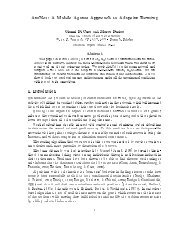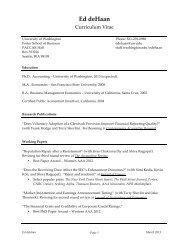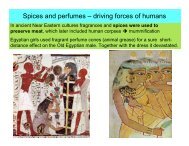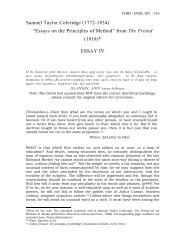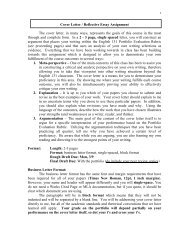Plants with toxic alkaloids - University of Washington
Plants with toxic alkaloids - University of Washington
Plants with toxic alkaloids - University of Washington
You also want an ePaper? Increase the reach of your titles
YUMPU automatically turns print PDFs into web optimized ePapers that Google loves.
Greek Fire<br />
Roasting limestone CaCO3 produces a crumbling residue <strong>of</strong> CaO calcium oxide<br />
or quicklime. When this is sprinkled <strong>with</strong> water it will turn into Ca hydroxide<br />
and develop heat <strong>with</strong> the potentil <strong>of</strong> selfignition. The combination <strong>of</strong><br />
quicklime & sulfur was creating self-ignitng materials<br />
Incendiary coating <strong>of</strong> arrows = were<br />
made from resins, tar, petroleum & sulfur.<br />
Smokes: Chinese have deviced burning mixtures <strong>with</strong> sulfur and arsenic that<br />
were used to kill large infestations <strong>of</strong> insects. They also developed smoke ball<br />
for warfare. One successful receipt was to mix pine resin, charcoal and sulfur<br />
<strong>with</strong> powdered root <strong>of</strong> Aconitum monkshood, croton beans (cathartic<br />
purgative from euphorb fam.), hallucinogenic hemp,<br />
Alum is a bisulfate <strong>of</strong> potassium and aluminum. known to the ancient<br />
sailors to fire-pro<strong>of</strong> the wood <strong>of</strong> their ships against attacks <strong>with</strong> napalm in<br />
the form <strong>of</strong> Greek fire. A means to fire-pro<strong>of</strong> materials or to extinguish fires<br />
was vinegar (at that time sour vine). When sour wine was poured over hot<br />
rocks <strong>of</strong> limestone or marble in a siege, these rocks would disintegrate.



